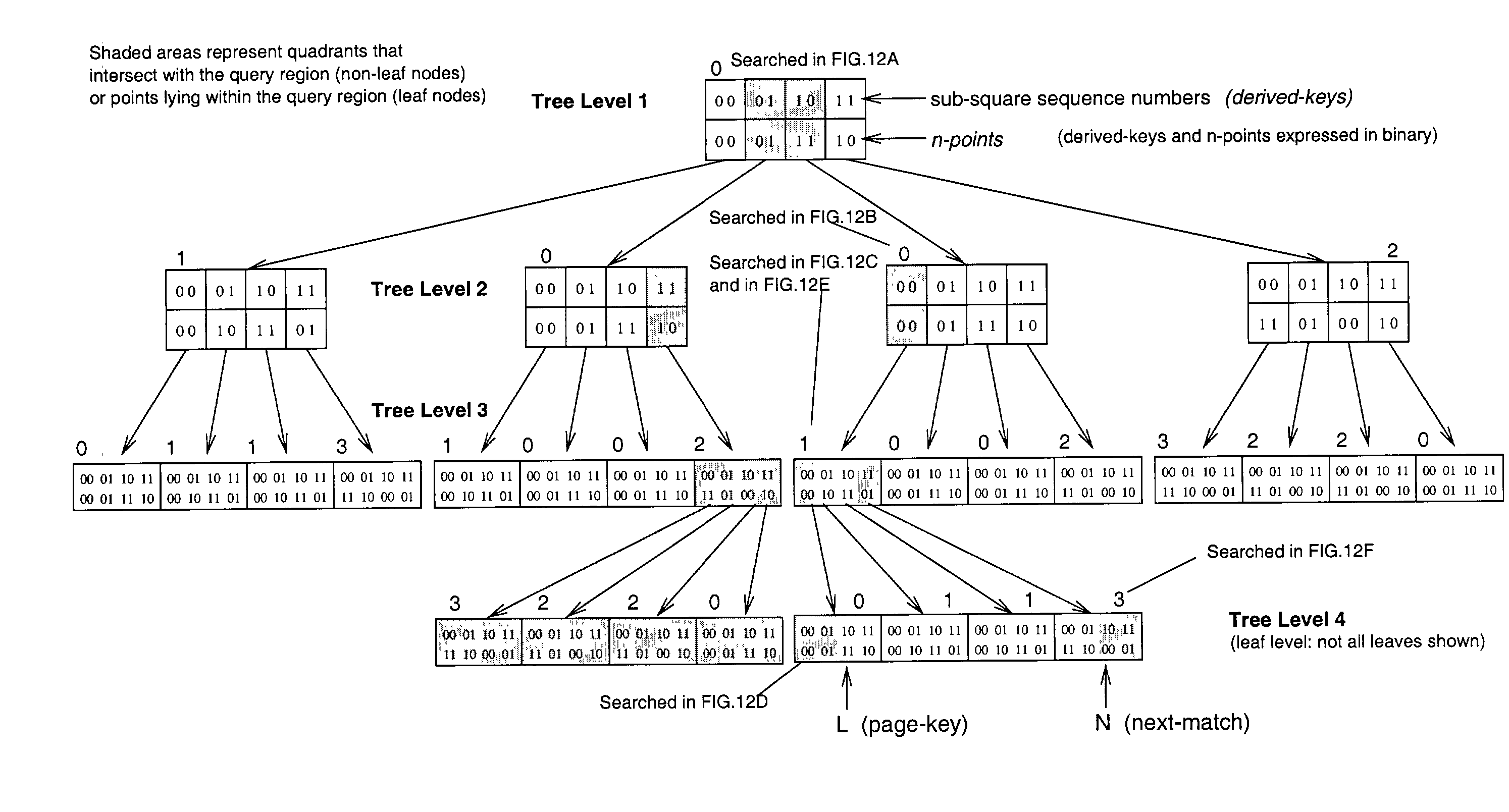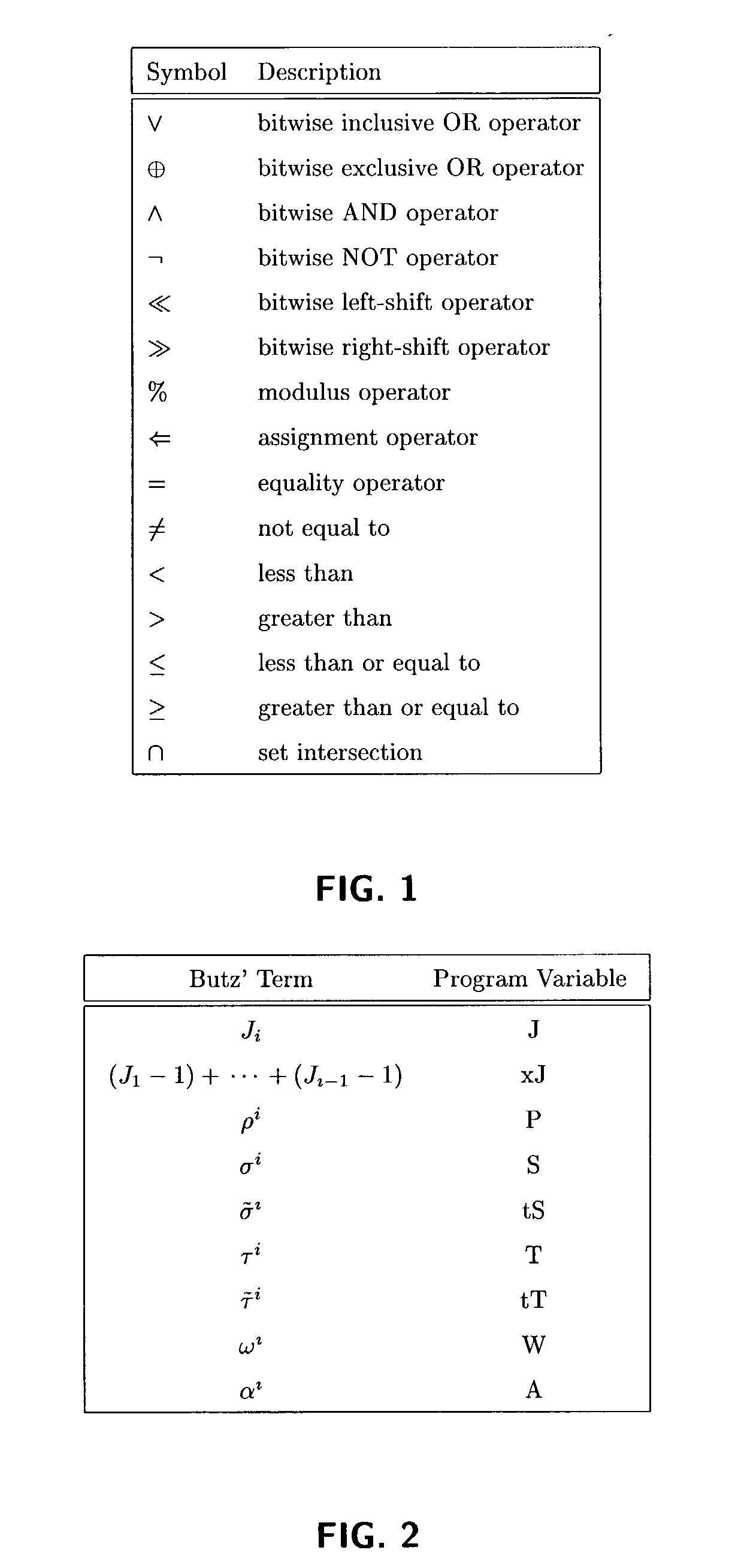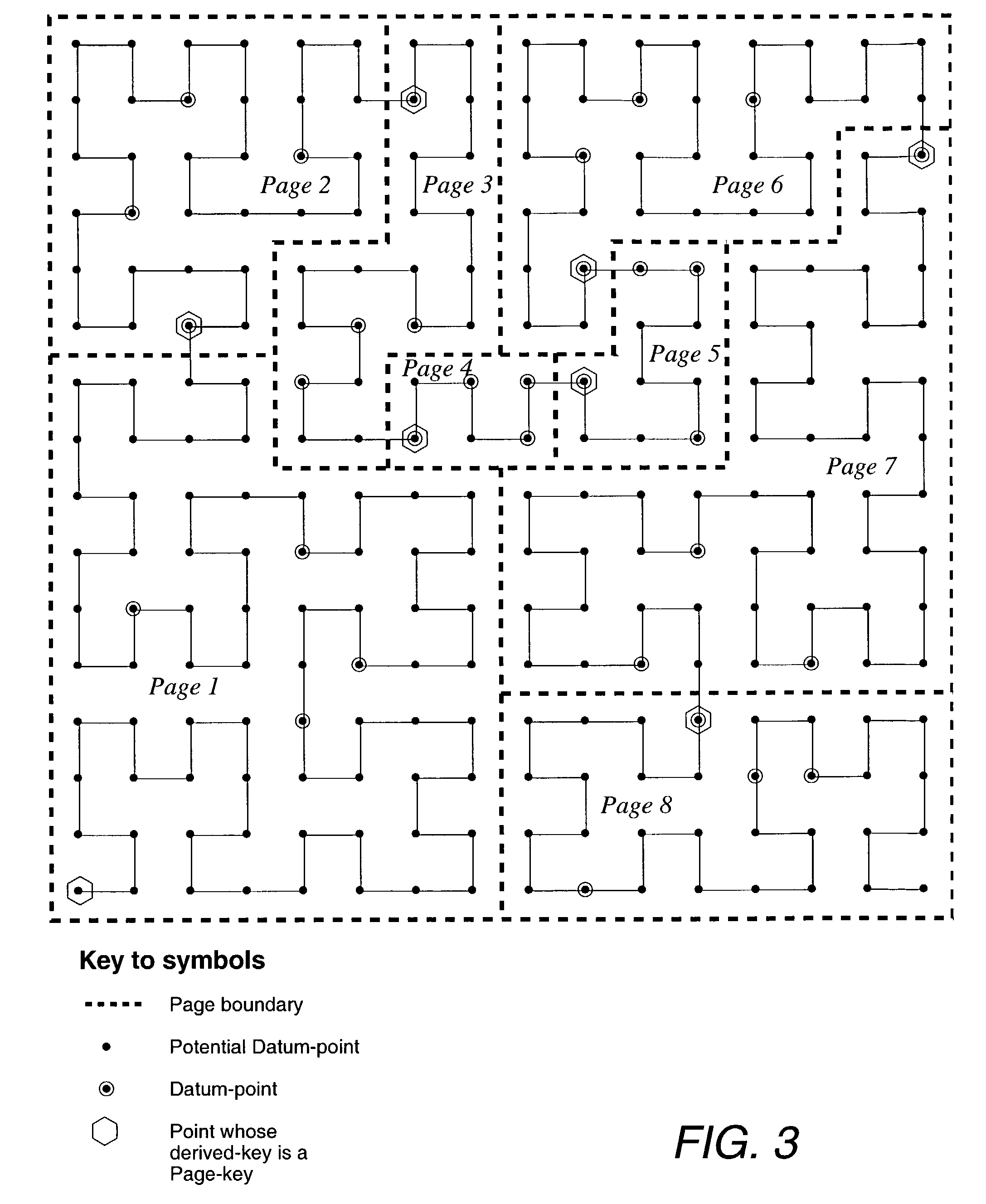Method of storing and retrieving multi-dimensional data using the hilbert curve
a multi-dimensional data and hilbert curve technology, applied in the field of storing and retrieving multi-dimensional data using the hilbert curve, can solve the problems of inability to store, and the knowledge of the derived-key values of the lower and upper bound points of the query region does not assist in the query process
- Summary
- Abstract
- Description
- Claims
- Application Information
AI Technical Summary
Problems solved by technology
Method used
Image
Examples
Embodiment Construction
of the Algorithm
[0195] In this Section, the algorithm is presented for the Hilbert Curve that is implemented as the calculate_next_match function. The description is followed with a commentary on how the main operations performed within it can be implemented.
[0196] References to `states` are made in the algorithm. In this context, a state encapsulates the ordering of quadrants within the space corresponding to a node in the tree according to their derived-keys. Thus a state is a particular type of node in the tree representation of the Hilbert Curve and it encapsulates a mapping between derived-keys and n-points of quadrants in a node. Where state diagrams are used for mapping calculations, a state is represented by its state number in the state diagram. Given the number of the current-state and the derived-key of a quadrant, its n-point can be looked-up in the state diagram as can its next-state number for use in the next iteration of the algorithm. The initial state is taken to be...
PUM
 Login to View More
Login to View More Abstract
Description
Claims
Application Information
 Login to View More
Login to View More - R&D
- Intellectual Property
- Life Sciences
- Materials
- Tech Scout
- Unparalleled Data Quality
- Higher Quality Content
- 60% Fewer Hallucinations
Browse by: Latest US Patents, China's latest patents, Technical Efficacy Thesaurus, Application Domain, Technology Topic, Popular Technical Reports.
© 2025 PatSnap. All rights reserved.Legal|Privacy policy|Modern Slavery Act Transparency Statement|Sitemap|About US| Contact US: help@patsnap.com



